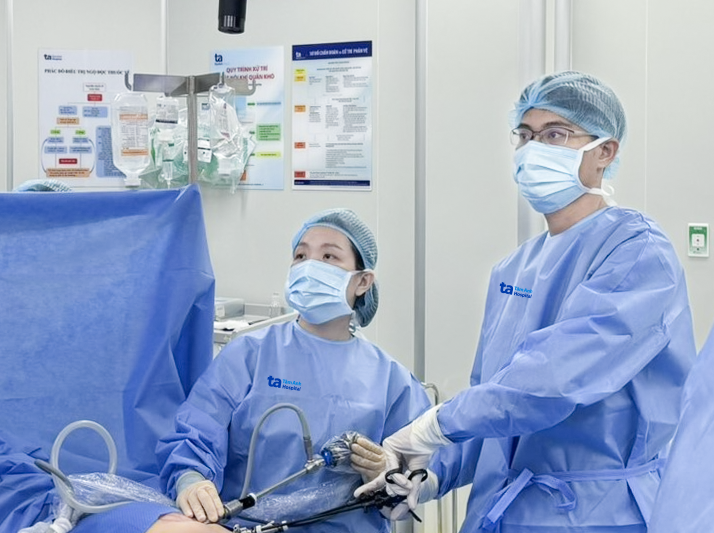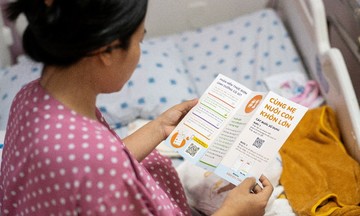Doctor Lam Thien Kim, from the pediatric surgery department of Tam Anh General Hospital in Ho Chi Minh City, explained that pain is a warning sign of a twisted fallopian tube cyst. The pain can indicate both the twisting and untwisting of the cyst. When Hien was initially examined, there were no signs of twisting, so doctors admitted her for observation.
A twisted fallopian tube cyst occurs when the fallopian tube twists around the tissues and ligaments that support it, compressing the blood vessels and causing blockage. This is a rare gynecological emergency, occurring in about 1 in 1.5 million cases. The twisting causes blood vessel blockage, leading to pain. Sometimes, the cyst untwists itself, restoring blood flow and relieving the pain.
In Hien’s case, a day after admission, she experienced severe pain, indicating the cyst could no longer untwist on its own and required surgery. The surgical team performed laparoscopic surgery and found the cyst had twisted 5 times, causing the ovary and surrounding tissue to turn purple – a sign of venous congestion and arterial ischemia. Delayed intervention would have resulted in necrosis of the ovary, necessitating removal and potentially impacting future fertility.
The surgical team untwisted the fallopian tube and ovary, restoring normal blood flow. Post-operative pathology confirmed the cyst was benign. Hien was discharged after three days.
 |
Doctor Kim (left) performing laparoscopic surgery on the patient. Photo: Tam Anh General Hospital |
Doctor Kim (left) performing laparoscopic surgery on the patient. Photo: Tam Anh General Hospital
This condition is often caused by the increased weight of the fallopian tube cyst, structural abnormalities, ovarian cysts, or fluid buildup in the ovaries. The fallopian tube can twist on its own or along with the ovary. Symptoms are often mistaken for digestive issues, including sudden, severe lower abdominal pain, vomiting or nausea, and sometimes a low-grade fever. Diagnosis requires an ultrasound.
Doctor Kim noted that ultrasounds sometimes only detect the cyst if the fallopian tube has untwisted itself or hasn’t fully twisted, as blood flow might still be present. Patients with cysts larger than 3 cm require hospitalization for monitoring and timely intervention. Laparoscopic detorsion is the standard treatment.
Dinh Lam
*The patient’s name has been changed.
| Readers can submit questions about children's health here for doctors to answer. |












